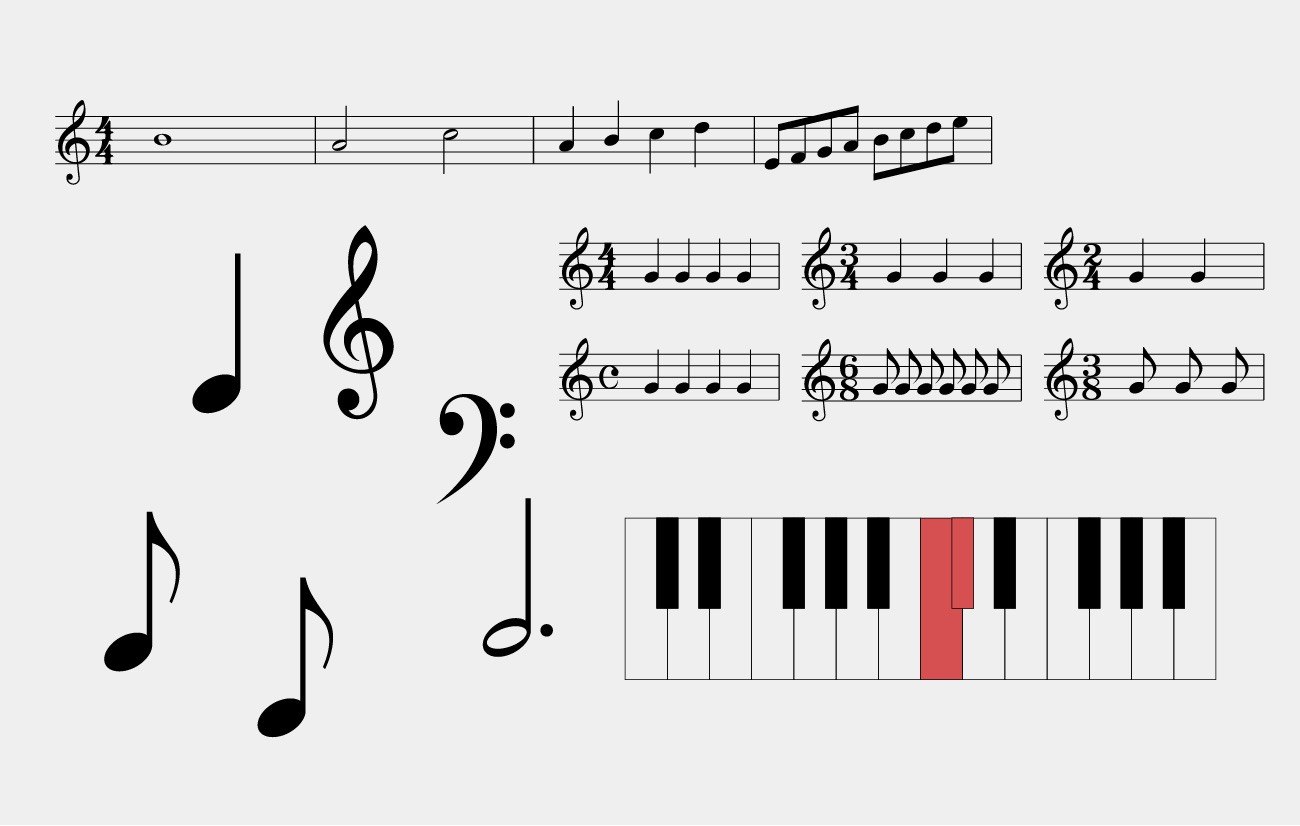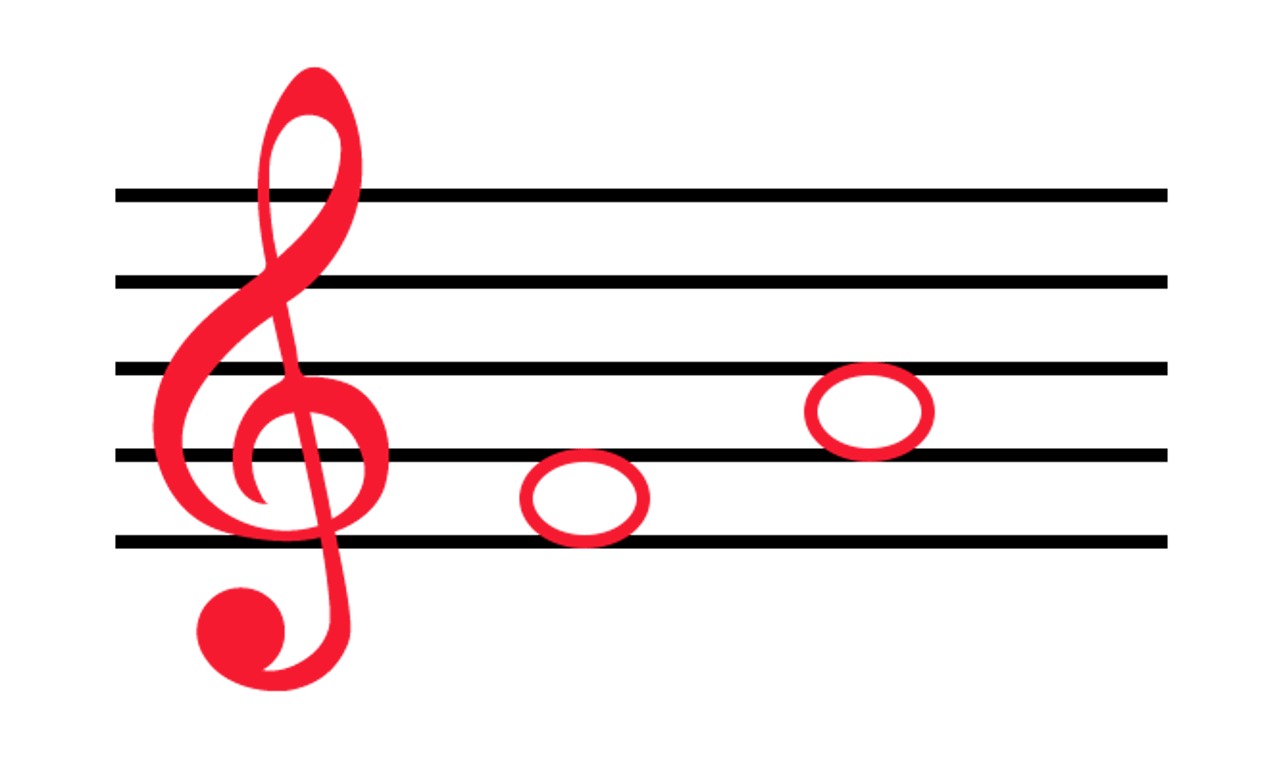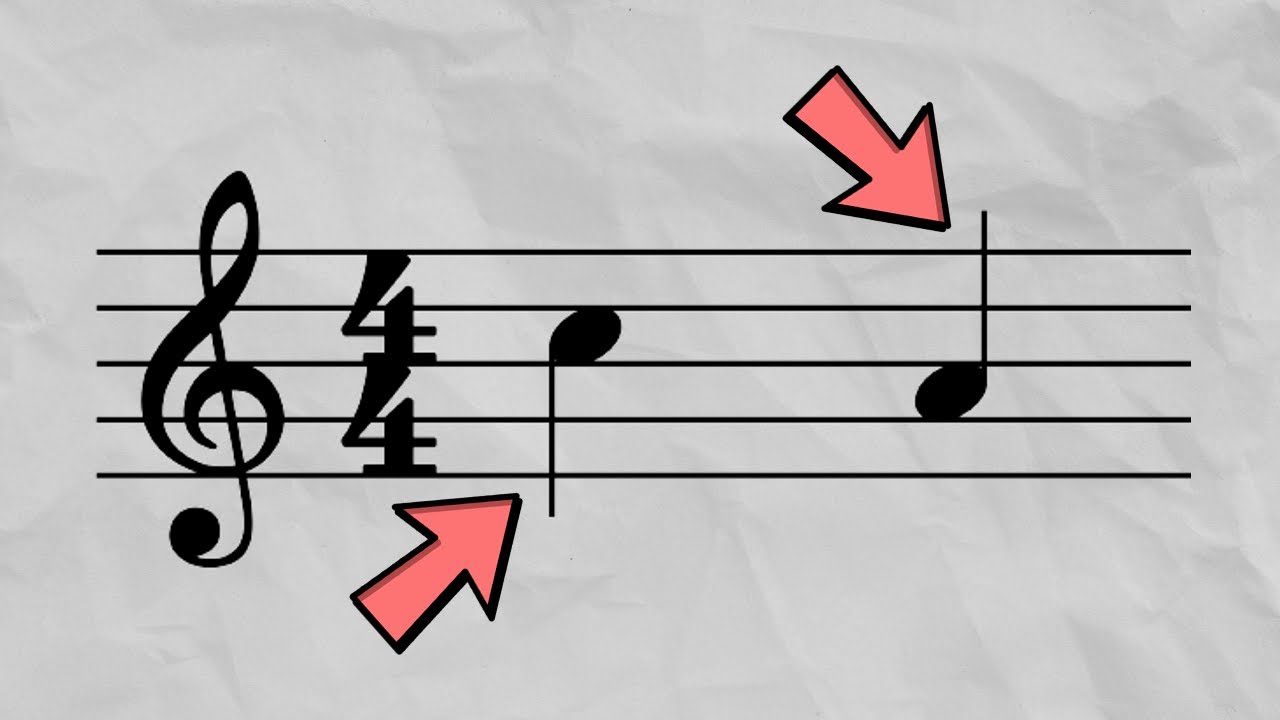Home>Events & Info>Note>What Does A Music Note With A Small Flag Mean


Note
What Does A Music Note With A Small Flag Mean
Modified: January 22, 2024
Discover the meaning of a music note with a small flag, also known as a "note." Learn about its significance and how it is used in musical notation.
(Many of the links in this article redirect to a specific reviewed product. Your purchase of these products through affiliate links helps to generate commission for AudioLover.com, at no extra cost. Learn more)
Table of Contents
Introduction
In the world of music notation, symbols and markings play a crucial role in conveying information to musicians. From dynamics to articulations, these symbols provide guidance on how to interpret and perform a piece of music. One such symbol that you may come across is a music note with a small flag.
In this article, we will explore the meaning and significance of a music note with a small flag. We will dive into the world of musical notation, delve into the purpose of this symbol, and examine the different interpretations it can have in different musical contexts. So, whether you’re a music enthusiast, a student, or a performer, let’s unravel the mystery behind this intriguing symbol.
Music notation is essentially a system of symbols that represent pitch, duration, dynamics, and other musical parameters. It allows composers to communicate their musical ideas and enables performers to interpret and bring the music to life. From a simple melody to a complex symphony, music notation serves as a universal language that transcends cultural and linguistic boundaries.
A music note, also known as a musical note or simply a note, is a symbol used to represent a specific pitch and duration. Depending on its placement on the staff and the presence of additional markings, each note has a unique identity and function within the musical composition.
Now, let’s turn our attention to the music note with a small flag. This symbol, also known as an eighth note or quaver, is a fundamental rhythmic unit in Western music notation. It is characterized by a solid oval or ellipse shape with a stem and a small flag attached to it.
The eighth note is typically half the duration of a quarter note and twice the duration of a sixteenth note. It is often used to represent quick and syncopated rhythms, adding a sense of energy and movement to the music.
Throughout this article, we will explore the various aspects of the music note with a small flag, shedding light on its role in musical composition and performance. So, let’s dive deeper into the world of musical notation and unravel the secrets of this intriguing symbol.
Definition of a Music Note with a Small Flag
A music note with a small flag, also known as an eighth note or quaver, is a fundamental symbol in music notation. It is used to represent a specific pitch and duration in a musical composition. This symbol consists of a solid oval or ellipse shape with a stem and a small flag attached to it.
The eighth note is named so because it is typically one-eighth the duration of a whole note or semibreve. It is half the duration of a quarter note and twice the duration of a sixteenth note. The stem of the eighth note can be either upward or downward, depending on its placement on the staff and its relationship to other notes.
Visually, the small flag on the eighth note distinguishes it from other note durations. The flag is a thin diagonal line that extends from the stem of the note. It can be either straight or slightly curved, pointing in the direction opposite to the stem. The flag adds a sense of visual movement to the note and gives it a distinctive appearance.
In addition to its appearance, the eighth note also has a specific rhythmic value. In most time signatures, an eighth note is equivalent to half the duration of a quarter note. For example, in 4/4 time, which is commonly used in Western music, a quarter note receives one beat, while an eighth note receives half a beat.
The small flag on the eighth note plays a significant role in rhythmic interpretation. When multiple eighth notes appear consecutively, they are often connected by beams, creating a visually cohesive group. The number of flags on the notes within a beamed group determines the overall rhythmic subdivision. For example, two eighth notes with connected flags create a rhythmic grouping known as a “dotted eighth note.” This rhythmic figure carries a distinct pattern and provides a specific rhythmic feel within the music.
Now that we have defined the music note with a small flag and understood its visual representation and rhythmic value, let’s delve deeper into the world of musical notation and explore the purpose behind this symbol.
Musical Notation and Symbols
Musical notation is a system of symbols used to represent musical ideas and communicate them to musicians. It allows composers to transcribe their compositions onto paper, providing a written record of the music. Musicians then use this notation to read and perform the music accurately.
Music notation is typically based on a staff, which consists of horizontal lines and spaces that represent specific pitches. Different symbols are placed on or between these lines and spaces to indicate the pitch, duration, and other musical elements.
One of the fundamental symbols in musical notation is the note. Notes are used to represent the duration and pitch of a sound. They can vary in shape and appearance to convey different rhythmic values. For example, a whole note (or semibreve) is represented by an open oval shape, while a half note (or minim) is represented by a filled-in oval shape.
In addition to different note shapes, other symbols are used to modify the pitch and duration of notes. For instance, accidentals such as sharps (#), flats (♭), and naturals (♮) are used to raise or lower the pitch of a note. Rests, which are symbols indicating periods of silence, are also used to indicate pauses in the music.
Furthermore, musical notation employs symbols to convey dynamics, articulations, and other performance instructions. Dynamics symbols such as pianissimo (pp) and forte (f) indicate the volume or intensity of the music. Articulation symbols, such as staccato dots or slurs, indicate the way notes should be played or connected.
In addition to these common symbols, there are also specialized symbols used in specific genres or styles of music. These symbols can include ornaments, chord symbols, repeat signs, and more. Each of these symbols serves a specific purpose in conveying the composer’s intentions and guiding the performer’s interpretation.
Music notation provides a standardized system for musicians to communicate and interpret music across different cultures and time periods. It allows for precise and consistent representation of musical ideas, ensuring that the composer’s intentions are accurately conveyed to the performer.
Now that we have a basic understanding of musical notation and symbols, let’s explore the purpose of the small flag on a music note and how it contributes to the overall musical interpretation.
The Purpose of a Small Flag on a Music Note
The small flag on a music note serves multiple purposes and plays an important role in musical interpretation. The presence of the flag not only affects the visual appearance of the note but also provides rhythmic information and gives the music a sense of rhythmic movement.
One of the primary purposes of the small flag is to indicate the duration or time value of the note. In a standard notation system, the flag on an eighth note signifies that it is half the duration of a quarter note. This allows performers to accurately determine the length of each note and execute the rhythm with precision.
The small flag also assists in recognizing rhythmic patterns and subdivisions within a musical piece. When multiple eighth notes with flags appear consecutively, they are often grouped together by connecting the flags with horizontal lines called beams. These beamed eighth notes create a visual grouping that aids in reading and understanding complex rhythms more easily.
Moreover, the presence of the flag affects the visual representation of the note, making it distinct from other note durations. The small flag adds a sense of movement and energy to the note, especially when multiple flags are present. This visual cue helps musicians differentiate between different rhythmic values and aids in sight-reading music.
The presence or absence of a flag can also alter the feel and character of a musical passage. For example, a series of eighth notes with flags may create a lively and fast-paced rhythm, while a series of eighth notes without flags may create a more legato or sustained effect. The flag serves as a visual cue that influences the performer’s interpretation and expression of the music.
In addition, the flag on a music note can affect the overall tempo of a piece. In certain musical styles, such as jazz or Latin music, the flag indicates a swing or syncopated rhythm. It gives the music a distinctive groove and allows the performer to infuse their personal expression and improvisation into the rhythm.
Overall, the small flag on a music note serves the purpose of indicating duration, facilitating rhythmic interpretation, enhancing visual recognition, and influencing the overall feel and tempo of the music. It is an integral part of musical notation and plays an essential role in guiding performers to accurately perform and convey the composer’s intentions.
Now that we understand the purpose of the small flag, let’s explore how this symbol can be interpreted differently in various musical contexts.
Different Interpretations of a Music Note with a Small Flag
A music note with a small flag can be interpreted in various ways depending on the musical context and style of composition. The interpretation of this symbol can involve aspects such as rhythm, articulation, and stylistic nuances. Let’s dive into some of the different interpretations of a music note with a small flag.
1. Rhythmic Interpretation: The presence of the small flag on an eighth note indicates a shorter duration compared to a quarter note. In a piece of music, a series of eighth notes with flags may be played with a quick and bouncy rhythm, adding energy and momentum to the music. This interpretation can create a sense of liveliness and drive within a musical passage.
2. Articulation and Expression: The small flag can also influence the articulation and overall expression of the music. In some genres, such as jazz or blues, the flag signifies a swing rhythm, where the notes are played with a subtle lilt or syncopation. This interpretation adds a distinct groove and personality to the music, allowing the performer to infuse their own style and expression.
3. Visual Subdivision: When multiple eighth notes with flags are connected by beams, they form rhythmic subdivisions of the underlying pulse. These groupings help musicians read and navigate complex rhythmic patterns more easily. The way these eighth notes with flags are beamed together determines the rhythmic grouping and subdivision, which can vary depending on the time signature and musical style.
4. Contrasting Interpretations: In certain musical compositions, the presence of a music note with a small flag can create a contrast with other note durations. For example, a passage with mostly quarter notes and a sudden appearance of eighth notes with flags might introduce a faster and more agile rhythmic motif. This contrast can provide a dynamic and interesting texture within the music.
5. Genre-Specific Interpretations: Different musical genres or styles may have their own conventions and interpretations of a music note with a small flag. For instance, in classical music, the flag on an eighth note may indicate a light and graceful articulation. In contrast, in rock or punk music, the same note might be played with a more aggressive and intense attack, emphasizing its energetic qualities.
These are just a few examples of the different interpretations that can arise from a music note with a small flag. The precise meaning and execution of this symbol heavily rely on the specific musical context, the composer’s intentions, and the performer’s artistic interpretation.
Now, let’s explore some examples of music notes with small flags in different musical notations to further solidify our understanding.
Examples of Music Notes with Small Flags in Notation
To better understand the practical application of music notes with small flags, let’s examine some examples of their usage in different musical notations.
Example 1: In a piece written in 4/4 time signature, you may encounter a passage where eighth notes with flags appear in groups of two or more. These connected eighth notes indicate a subdivision of the beat and are often beamed together. This notation clearly communicates the rhythmic pattern and guides the performer in maintaining a steady and precise pulse.
Example 2: In jazz music, eighth notes with flags are often interpreted with a swung rhythm. This style of interpretation involves playing the first eighth note slightly longer than the second, creating a syncopated and swinging feel. The small flag serves as a visual cue for the performer to adopt this stylistic approach and infuse the music with the desired swing.
Example 3: In classical music, eighth notes with flags may be used to convey delicate and agile passages. The small flag signifies a shorter duration, encouraging the performer to execute the notes with lightness and grace. This interpretation adds a sense of elegance and finesse to the music, enhancing the overall artistic expression.
Example 4: In a fast-paced rock or punk song, eighth notes with flags may be played with intensity and power. The small flag acts as a visual representation of the quick and energetic rhythm, allowing the performer to emphasize the driving and aggressive qualities of the music. This interpretation contributes to the high-energy and dynamic nature of the genre.
These examples illustrate the versatility and adaptability of music notes with small flags in different musical styles and genres. The usage of the small flag can convey specific rhythmic patterns, influence the stylistic interpretation, and provide visual guidance to the performer.
It is important to note that the meaning and interpretation of music notes with small flags can be subjective and may vary based on the composer’s intentions, cultural practices, and individual artistic choices. Therefore, it is essential for performers to carefully study and understand the context in which these symbols appear, allowing them to accurately interpret and bring to life the musical composition.
Now that we have explored the different interpretations and examples of music notes with small flags, let’s conclude our discussion on this intriguing symbol.
Conclusion
The music note with a small flag, also known as an eighth note or quaver, holds significant importance in musical notation. Its presence conveys specific rhythmic information, influences the visual representation of the note, and contributes to the overall interpretation of the music.
Through its distinct appearance and rhythmic value, the small flag on an eighth note helps musicians accurately determine the duration of the note and establish rhythmic patterns within a composition. It guides performers in executing lively and energetic rhythms or creating a swing or syncopated feel, depending on the musical style.
The small flag also aids in visual recognition, making the eighth note easily distinguishable from other note durations. When multiple eighth notes with flags are connected by beams, they form cohesive groups that facilitate reading complex rhythms and subdividing the underlying pulse.
However, the interpretation of the small flag can vary based on the musical context and style. It can be a symbol of delicacy and grace in classical music, a driving force in rock or punk music, or a characteristic element of swing in jazz. These different interpretations reflect the versatility and adaptive nature of music notation and performance.
As musicians, it is essential to study and understand the purpose and significance of the small flag on a music note. By doing so, we can accurately interpret the composer’s intentions, infuse our own artistic expression, and create an engaging and authentic musical experience for both performers and listeners.
In conclusion, the music note with a small flag is a vital element in musical notation. It guides performers in understanding the rhythmic structure, adds visual interest to the score, and influences the overall interpretation and expression of the music. So, whether you’re a musician, composer, or music enthusiast, pay attention to the small flag and let it guide you on your musical journey.











